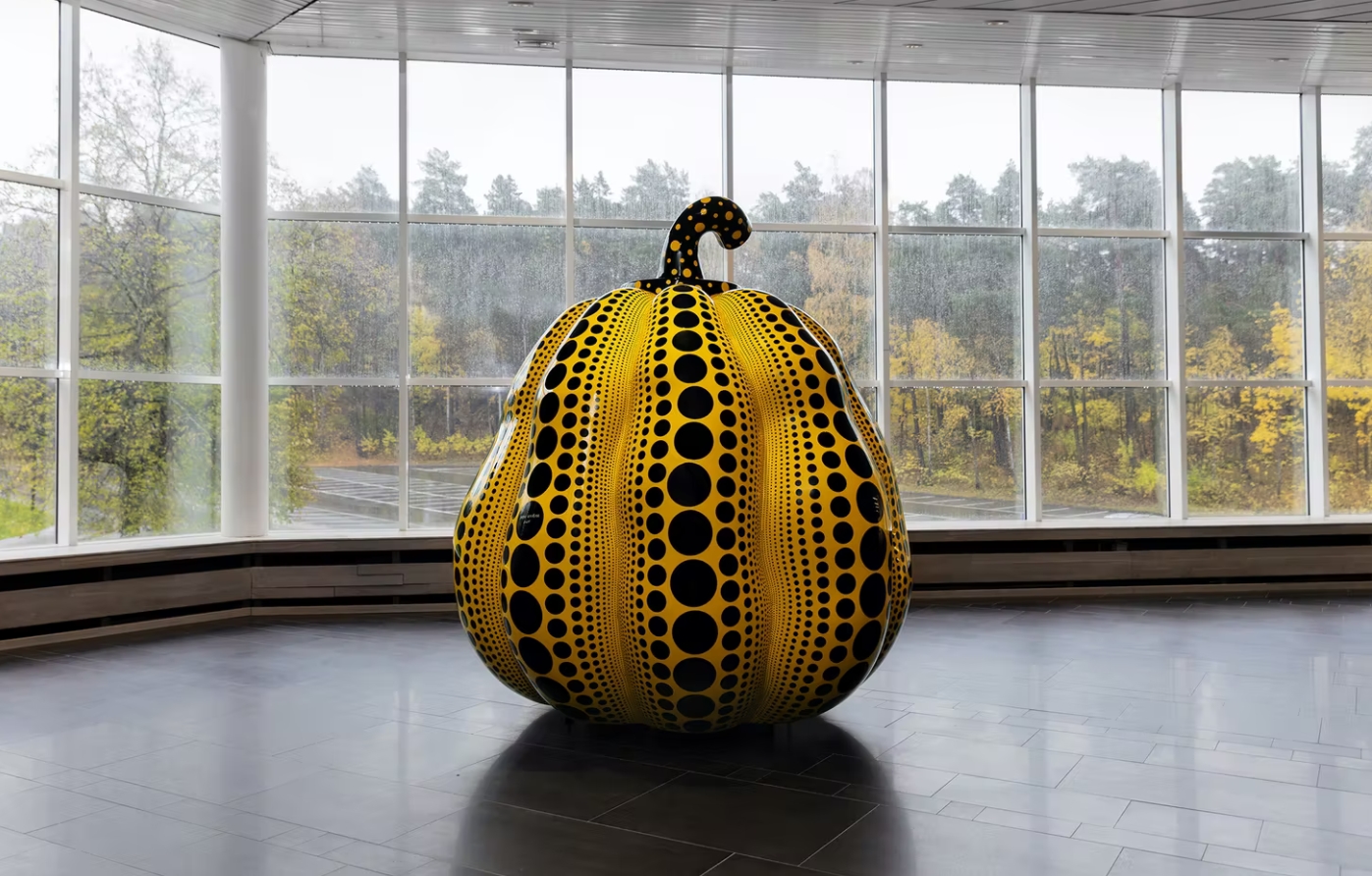In art history Yayoi Kusama’s (b. 1929) work are truly original contributions to post-war, and neo avant-garde art. Since her time in the center of New York’s avant-garde, her art has circled around the same basic themes: fantasies of infinity, dizzying psychological space one can disappear in, and the desire to be extinguished by the world. In Kusama’s art, infinity is both a cosmic space, a spiritual idea and a bottomless psychological depth.
The attraction to this great nothing is characterized by both lust and anxiety. The Hymn of Life installation was designed specifically for the exhibition tour with Yayoi Kusama, and was shown for the first time at Høvikodden at the Kusama exhibition in 2016.
The pumpkin motif started to appear in Yayoi Kusamas art in the early 1980s, a yellow pumpkin with a surface covered by a dense pattern of black dots. The pumpkin motif can already be seen in Kusama’s earliest nature studies, and later perfected in its familiar form in sculpture, paintings, and installations. In her autobiography she describes her intuitive attraction to the pumpkin as follows: “It seems that pumpkins do not inspire much respect. But I was enchanted by their charming and winsome form. What appealed to me most was the pumpkin’s generous unpretentiousness. That, and its solid, spiritual base.”




